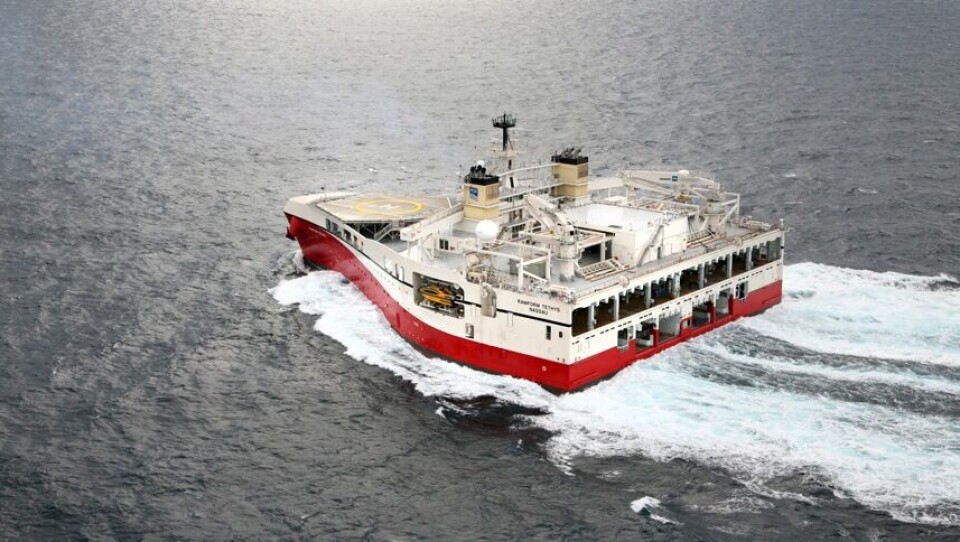
Naming ceremony of «Ramform Tethys»
Denne artikkelen er tre år eller eldre.
The third of four Ramform Titan-class vessels, the «Ramform Tethys», was celebrated in a naming ceremony at the Mitsubishi Heavy Industries Shipbuilding Co. yard in Nagasaki, Japan.
PGS' two first Ramform Titan-class vessels, the Ramform Titan (M/S «Ramform Titan») and the Ramform Atlas were delivered in 2013 and 2014 and have delivered beyond expectations on all aspects, especially within safety, efficiency and productivity.
«Ramform Tethys», and the Ramform Hyperion, will be even better due to small modifications of equipment handling on the back deck and an increase in engine power to 26 400 kW from 23 040 kW on the first two Ramform Titan-class vessels.
– With the increased power output and the back deck modifications we are enhancing the Ramform Titan-class acquisition platform further. Productivity, safety, stability and redundancy are the key benefits of these vessels. Their ability to tow many streamers gives high data quality with dense cross-line sampling and cost efficient acquisition with wide tows, says Per Arild Reksnes, EVP Operations.
The «Ramform Tethys» is the most powerful and efficient marine seismic acquisition vessel in the world, and along with the Ramform Titan and Ramform Atlas, the widest ships ever at the waterline.
The design dovetails advanced maritime technology to the imaging capabilities of the GeoStreamer seismic acquisition technology. Her 70 meter broad stern is fully exploited with 24 streamer reels: 16 reels aligned abreast and 8 reels further forward, with capacity for 12 kilometer streamers on each reel. With such capabilities the Ramform Tethys has tremendous flexibility and redundancy for high capacity configurations. Increased work space and advanced equipment handling mean safer and even more robust operations. The Ramform concept design is made by Roar Ramde.
The vessel carries over 6,000 tons of fuel and equipment. She will typically tow a network of several hundred thousand recording sensors over an area greater than 12 km2, equivalent to nearly 1,200 soccer pitches, or 3.5 times Central Park.
For PGS and its clients, more rapid deployment and retrieval of equipment, as well as greater operational capacity will translate into faster completion of surveys and increased uptime in marginal weather. The period between major yard stays is also extended by approximately 50%.
«Ramform Tethys» sets the new standard for seismic operations for the next 25 years.











